Charleston Currents #13.04 | Nov. 123 2020
LOWCOUNTRY JEWEL. Charleston photographer English Purcell snapped pictures over the weekend in the Donnelley Wildlife Management Area in Colleton County, including this grand tree dripping with Spanish moss. The 8,048-acre area, managed by the state Department of Natural Resources, is rich with Lowcountry wildlife, maritime forests and water scenes. Learn about visiting here.
TODAY’S FOCUS: The act of resistance embedded in a mysterious Magnolia Gardens photo
COMMENTARY, Brack: S.C. should take virus more seriously and act
IN THE SPOTLIGHT: Titan Termite & Pest Control
NEWS BRIEFS: Annual chili cook-off raises big money to help animals
FEEDBACK: Send us your thoughts
MYSTERY PHOTO: Building with history
CALENDAR: Photographs, paintings on December display in North Charleston
Resistance embedded in mysterious Magnolia Gardens photo
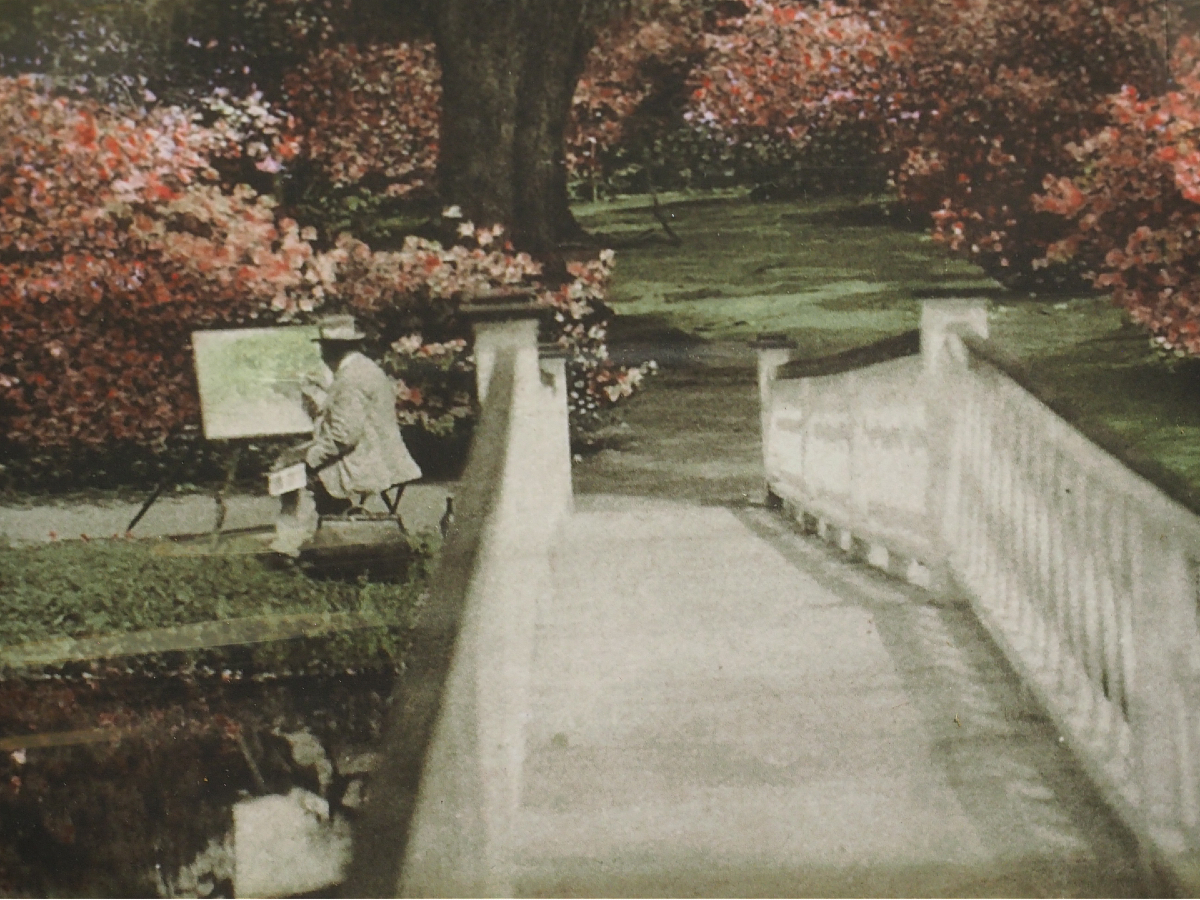
Historians and art enthusiasts believe that when Charleston artist Edwin Augustus Harleston was denied entry to Magnolia Plantation and Gardens, he painted an image of himself in this 1920s panoramic view of the White Bridge at Magnolia, as shown in this close-up view. The bridge, built from cypress in the 1840s, is currently undergoing extensive repair after a mass tree fell on it this summer. A copy of the original Harleston photo is on sale at Magnolia’s gift shop. (Photos by Herb Frazier)
By Herb Frazier, special to Charleston Currents | A hand-tinted photograph captures a unique panoramic view 90 years ago of the iconic White Bridge at Magnolia Plantation and Gardens with a glimpse of the pointed cupola of Magnolia’s Main House.
What gives this old-fashioned picture an even more intriguing tinge, however, is a haunting image of a well-dressed artist painted into the photo as a bygone act of defiance against southern racial norms at that time.
Wearing what appears to be a seersucker suit and straw hat, the artist, seated before an easel, is dwarfed by the foot bridge, towering oaks and bushy azaleas in a late 1920s snapshot of America’s oldest garden.
Today, a copy of that original wide-angled view hangs in the sitting room of Magnolia’s Main House where the artist ̶ presumably Edwin Augustus Harleston ̶ would not have been invited for dinner because of his mixed parentage. His mother was a free person of color, and his father descended from a white planter and a woman he enslaved.
Two women who know Harleston’s story and his paintings lament he could have been a darling of America’s art scene if it had not been for the demands of a family-owned funeral home and Jim Crow laws. Harleston painted during an arts revival from the early- to mid-20th century called the Charleston Renaissance. White artists shunned him even though he was considered the best black portrait and landscape artist of his time.
In a Feb. 2, 1930, letter Harleston asked Magnolia’s owner C. Norwood Hastie Sr. for permission to paint in the gardens. Three days later, Hastie denied the request. Although Hastie didn’t mention Harleston’s race, it was widely understood then the gardens were off limits to black people. Since Harleston was turned away, he likely brushed his likeness into the photo. Ironically, the framed photo hangs above a table with Hastie’s picture on it.
Harleston painted at least three landscapes in Magnolia’s gardens before he wrote to Hastie. Mae Whitlock Gentry, Harleston’s great-niece, said since her uncle studied landscape painting at the Art Institute of Chicago, he wanted to return to Magnolia, a place he considered to be one of the most stunning gardens in the country. Harleston initially gained entry to the gardens disguised as part of a black carpentry crew led by Thomas Mayhem Pinckney. Magnolia hired him to build Magnolia’s footbridges, according to Susan V. Donaldson’s essay “Charleston’s Racial Politics of Historic Preservation: The Case of Edwin A. Harleston.” Pinckney was married to Harleston’s cousin.
As he painted or sketched the gardens, Harleston also may have taken the picture. The photo also might have been taken by Harleston’s wife, Elise Forrest Harleston, an accomplished portrait photographer whose photos inspired her husband’s paintings. Elise Harleston hand-tinted some of her pictures. But Gentry added she’s never seen a wide-view photo in her collection. The Magnolia garden image was likely made with two black-and-white negatives spliced together.
A friend of Magnolia board member Taylor Drayton Nelson gave him the Harleston photo in 2006. Years after Magnolia received the photo, the word “Harleston” was noticed on the back of the image.
“We can only surmise the image of the artist sitting at the easel was Harleston,” said Gentry, who lives in Burbank, Calif. “He was the only artist named Harleston in Charleston, and we know he visited Magnolia Gardens. So we can surmise that it is Edwin Harleston. We don’t know for sure, and I don’t think we’ll ever know.”
If Harleston had come along after racial segregation, he could have achieved artistic greatness nationally, Charleston tour guide Ruth Miller said. Harleston studied in the north where he found less discrimination and respect, she said. Harvard University accepted him, but instead he studied at the Boston Museum of Fine Arts and later the Art Institute in Chicago. His time in Boston was interrupted when his father, Edwin Gaillard Harleston, ordered him home to help with the family-owned Harleston Funeral Home, once located on Calhoun Street.
Miller owns two Harleston paintings of the gardens at Magnolia. Gentry said she’s aware of a third once owned by the writer and first African-American Rhodes Scholar, Alain LeRoy Locke. Letters that Harleston exchanged between Locke and Hastie, Magnolia’s owner, are part of Harleston’s papers that Gentry donated in 2010 to Emory University in Atlanta, where she was a reporter and editor at the Atlanta Journal-Constitution.
As an artist Harleston “would have become nationally recognized if he had been able to settle in Washington, D.C., which is where he wanted to be,” Miller said. She also cites Spelman College art history professor Maurine Akua McDaniel’s reflection of Harleston in her book, Edwin Augustus Harleston: Envisioning the Talented Tenth. McDaniel wrote: “After living a comparatively free life as an artist in Boston, Harleston found it hard to acknowledge the fact that he could never compete with white artists in Charleston … even though he was probably the only academically trained painter in the city. Harleston also did not get national recognition because he died relatively young.”
Harleston’s father died of pneumonia in April 1931. A grief-stricken Harleston kissed his dying father on the lips and then he fell to the same disease weeks later at age of 49.
Herb Frazier is a Charleston-based writer. He’s the former public relations director at Magnolia Plantation and Gardens.
S.C. should take virus more seriously and act
By Andy Brack, editor and publisher | Headed our way for weeks has been a coronavirus surge, a sleeping tiger waiting to pounce its fertile spread as weather cools and people stay inside more.
 Infection rates across the nation have been soaring in recent weeks. Hospitals in the Midwest are at capacity. New restrictions are in effect in the Northeast. The high rates drifted toward the Sunbelt, as reflected in increasingly red maps from Arizona to Tennessee. South Carolina, light orange for weeks, is getting oranger as new coronavirus cases have gone from hundreds a day to more than a thousand.
Infection rates across the nation have been soaring in recent weeks. Hospitals in the Midwest are at capacity. New restrictions are in effect in the Northeast. The high rates drifted toward the Sunbelt, as reflected in increasingly red maps from Arizona to Tennessee. South Carolina, light orange for weeks, is getting oranger as new coronavirus cases have gone from hundreds a day to more than a thousand.
Right now, we’re not ready for what is a coming medical hurricane. In a real hurricane, the state of South Carolina has an emergency plan and lots of specific steps to move people out of harm’s way. But during the pandemic, the state’s government has been sitting on its hands, mostly incompetent. It has been more concerned with issuing hollow warnings and updating websites with data that should, but isn’t, driving real and serious policy and action.
South Carolina still has no uniform state mandate to wear masks or thin crowds. Places where people meet are operating again, albeit with some self-imposed safety protocols. People are moving and interacting almost like a year ago — just look at the traffic in metro areas.
With another surge on the way, we really need to be staying at home, not going to parties and football games.
Unfortunately, our state’s leader, Gov. Henry McMaster, has taken a course in denial about the threats from coronavirus from his crony, President Trump. The GOP-run legislature is no better at protecting life, liberty and the pursuit of happiness. Instead, it twiddles as more people die and get the virus.
“We really don’t have any leadership,” said state Sen. Brad Hutto, an Orangeburg Democrat who is the new Senate minority leader. “The governor is in line with Trump. There’s no leadership at DHEC [the S.C. Department of Health and Environmental Control] and the legislature has abandoned the field.
“There is no plan [to deal with the virus spread] and this is going to be a difficult winter. The news of the vaccine is great, but what’s the plan to distribute that?”
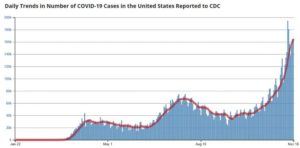 To get a handle on what the state is actually doing to get ready for the surge, we turned to DHEC. It hasn’t returned phone calls but says on a website that coronavirus questions should go to the S.C. Emergency Management Division. So we sent eight questions to both agencies and the governor:
To get a handle on what the state is actually doing to get ready for the surge, we turned to DHEC. It hasn’t returned phone calls but says on a website that coronavirus questions should go to the S.C. Emergency Management Division. So we sent eight questions to both agencies and the governor:
- It looks like COVID-19 is getting worse around the country and that a likely surge is headed this way. What is the state doing to curb the likelihood of another surge?
- When will Gov. McMaster issue a mandatory mask mandate?
- What’s the economic outlook ahead for businesses, particularly with the obvious surge coming this way?
- What more can people do other than wear masks, socially distance, not gather, and wash hands?
- What are projected deaths and infections by the end of the year and by end of Q1 of 2021?
- How would the state characterize the current situation — getting ready to get worse or improving or what?
- What emergency plans are in place to ensure there are enough hospital beds if there is a surge? What’s the latest data on bed availability?
- What’s the state doing to promote and increase testing? Is this a priority and, if not, why?
Want to guess the responses?
Yep, nothing but crickets. Which is what you expect when the state is acting like a circular firing squad.
“This fish stinks from the head,” said Fred Palm of Edisto Island, a retired professor of oversight and investigations who has called on the governor to be bold with more testing. “The basic problem is McMaster controls DHEC staff and board appointments. Independence is squashed.”
God, help us in the terrifying days ahead that wouldn’t be as frightening if we had state leaders who led.
So do your best for your family: Wear masks. Stay at home. Wash your hands. Be socially distanced. Be patient until you can get vaccinated.
Andy Brack is editor and publisher of Charleston Currents, and publisher of the Charleston City Paper. Have a comment? Send to: editor@charlestoncurrents.com.
Titan Termite & Pest Control
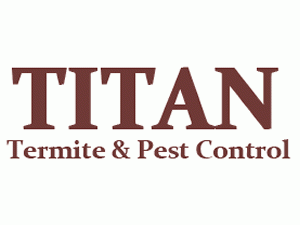 Titan Termite & Pest Control, headquartered in Charleston, is a full service residential, commercial and industrial pest control company serving South Carolina. It is a third-generation, family-owned company known for outstanding customer service. Each associate is dedicated to the customer and exhibits integrity and respect. Titan’s pest professionals can assist your commercial or residential location with general pest control, termite inspections, termite control, flea control, bed bug extermination, ant control and more. Titan Termite and Pest Control continues to set high standards so that its customers receive the best possible service. Titan’s technicians are knowledgeable of the latest in pest control techniques, which enables the company to customize effective treatment plans for every situation.
Titan Termite & Pest Control, headquartered in Charleston, is a full service residential, commercial and industrial pest control company serving South Carolina. It is a third-generation, family-owned company known for outstanding customer service. Each associate is dedicated to the customer and exhibits integrity and respect. Titan’s pest professionals can assist your commercial or residential location with general pest control, termite inspections, termite control, flea control, bed bug extermination, ant control and more. Titan Termite and Pest Control continues to set high standards so that its customers receive the best possible service. Titan’s technicians are knowledgeable of the latest in pest control techniques, which enables the company to customize effective treatment plans for every situation.
- Free estimate: 888-794-5603.
- Contact Titan online.
- To meet all of our underwriters, click here.
Annual chili cook-off raises big money to help animals
Staff reports | Animal lovers donated almost $400,000 Saturday during the Charleston Animal Society’s 20th annual Chili Cook-off, an event that was virtual for the first time due to the coronavirus pandemic.
Sixty five teams participated in the online cook-off to generate donations from 927 people and organizations for a total of $388,716, according to the Animal Society’s website. You can view the event, recorded live Saturday, by clicking here.
The cook-off, which is South Carolina’s largest celebration of animals, provides money for Toby’s Fund, which fuels veterinary medical care for homeless animals at the nonprofit.
Also Saturday, the organization announced winners of a contest to pick its spokesdog and spokescat for 2020. Both winners — Pete as spokesdog and Mr. T. as spokescat — will be featured on cans of Rescue Brew beer produced by Palmetto Brewing Company. It will hold a launch party for the beer from 1 p.m. to 7 p.m. Dec. 13 at its Huger Street location. The beer will be available in retail locations after that.
In other recent news:
![]() Dupree, Bass headed to Raleigh. Noted cookbook author Nathalie Dupree and historian husband Jack Bass are relocating to North Carolina to be closer to family. “Now, I have to deal with how much I will miss Charleston,” Dupree told the Charleston City Paper. “It’s an exciting place to live, and I feel like I’m leaving it without really being able to eat my favorite foods.” Check out the full story to find how her colleagues are taking the news.
Dupree, Bass headed to Raleigh. Noted cookbook author Nathalie Dupree and historian husband Jack Bass are relocating to North Carolina to be closer to family. “Now, I have to deal with how much I will miss Charleston,” Dupree told the Charleston City Paper. “It’s an exciting place to live, and I feel like I’m leaving it without really being able to eat my favorite foods.” Check out the full story to find how her colleagues are taking the news.
Airport testing site. Charleston International Airport and MUSC Health have collaborated to offer a mobile COVID-19 diagnostic testing site that will be open Monday to Wednesday this week from 1:30 p.m. to 4:30 p.m. Leaders for the two organizations are urging the community to get tested prior to any travel or holiday gatherings. The testing site will be located on the fourth floor of the airport’s Daily Parking Garage in North Charleston.
Thornley receives Order of the Palmetto. Trident Technical College President Mary Thornley received the state’s highest civilian honor, the Order of the Palmetto, from Gov. Henry McMaster Nov. 19 during a virtual Trident Technical College Foundation board meeting. Thornley has worked at the college for 47 years. She was hired as an adjunct instructor in 1973 and became a full-time instructor the next year. Over time she moved up the ranks and held positions including department head, dean and vice president for academic affairs. She was named president in 1991. During her tenure, the college has more than doubled in physical size, and the college’s enrollment has grown to almost 12,000 students, making Trident Tech the third largest college in the state.
- Have a comment? Send to: editor@charlestoncurrents.com
Got something to say? Let us know by mail or email
We’d love to get your impact in one or more ways:
Send us a letter: We love hearing from readers. Comments are limited to 250 words or less. Please include your name and contact information. Send your letters to: editor@charlestoncurrents.com. | Read our feedback policy.
Tell us what you love about the Lowcountry. Send a short comment – 100 words to 150 words – that describes something you really enjoy about the Lowcountry. It can be big or small. It can be a place, a thing or something you see. It might be the bakery where you get a morning croissant or a business or government entity doing a good job. We’ll highlight your entry in a coming issue of Charleston Currents. We look forward to hearing from you.
Building with history
This building, located somewhere in the Lowcountry, has an interesting history. Where is it and what makes it special? Send to editor@charlestoncurrents.com. And don’t forget to include your name and the town in which you live.
Our previous Mystery Photo
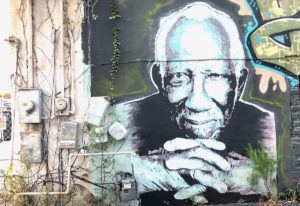 Our Nov. 16 photo, “Interesting place for a mural,” showed a painting of renowned blacksmith Philip Simmons on Avondale’s Alycia Alley behind Gene’s Haufbrau.
Our Nov. 16 photo, “Interesting place for a mural,” showed a painting of renowned blacksmith Philip Simmons on Avondale’s Alycia Alley behind Gene’s Haufbrau.
Kudos to the four readers who correctly identified the location — Allan Peel of San Antonio, Texas; George Graf of Palmyra, Va.; Marnie Huger of Richmond, Va.; and Jim McMahon of Charleston. Half a point to Chris Brooks of Mount Pleasant who knew it showed Simmons.
Peel shared a glut of information about the work: “The mural is called ‘At Peace’ and was created by artist Matthew Foreman, known nationally for his ‘urban art’ of murals and portraits found on the sides of buildings and in art galleries throughout the USA. It is just one of many murals in this alleyway, which actually contains the largest cluster of street murals in the Charleston area, where local artists are actually encouraged to paint in the parking lots and on the back of businesses along this small stretch of the Savannah Highway.
“Foreman spent about eight years in Charleston before moving to New Orleans. He lived just a few doors down from Mr. Simmons in the early 2000s, during which time Foreman became fascinated with Mr. Simmons’ work and developed a high level of respect for the man known around the world for making masterpieces from the melting, bending and molding of iron.
“This stretch of public art is often called ‘The Avondale Outdoor Gallery’ and is part of the ‘Charleston Art (chART) Outdoor Initiative’, which was started in 2011 by Geoff Richardson, proprietor of ‘Lava Salon’ which is also one of the Avondale Shops along Savannah Highway. There are more than 23 murals along this alleyway, and the rear facades of these buildings are constantly changing, since, true to the nature of ‘urban artwork’, none of it is intended to be permanent.
“Finally, I will close with an observation that the Charleston Currents, in its 01/02/2017 edition, had a brief article entitled: ‘PHOTO: A king of Charleston’ that also mentioned the murals in the alleyway behind the Avondale Shops, with a photo of the Bill Murray mural here.”
Thanks, Allan!
- Send us a mystery: If you have a photo that you believe will stump readers, send it along (but make sure to tell us what it is because it may stump us too!) Send it along to editor@charlestoncurrents.com.
Photographs, paintings on Dec. display in North Charleston
Staff reports | Photographs by Dawnita Hall of North Charleston and paintings by Susan Irish of Charleston will be on display at the City of North Charleston’s Park Circle Gallery throughout December. The concurrent solo exhibitions are free and open to the public.
Hall’s exhibit, Signs of Life, is a series of nine metallic print photographs of found signs and lettering. As a child, Hall was encouraged to notice signs and lettering by her parents who kept her occupied on long car rides by playing letter games with her. In this series, Hall points her camera at fading messages and signs to invoke narrative thought. She considers her style journalistic in nature and uses minimal digital darkroom tools to preserve the natural beauty of the scene. Hall began her photography practice by taking a photographic storytelling class with a borrowed camera. Fourteen years later, she now teaches photography and photographic storytelling techniques herself. She has won multiple awards for her photography and is currently a contributing photographer for the photographic history preservation project, The South Carolina Picture Project, produced by SciWay. More: DawnitaHall.com.
Irish, an artist and arts educator in Charleston, offers a series of abstract impressionist, mixed-media paintings with color palettes and compositions inspired by nature In her exhibit, I See You in My Garden. The exhibit also pays homage to Mother Nature and the artist’s mother who was also an avid gardener. Using a variety of materials including encaustic wax, collage, acrylic, and wax pastels, she develops layered images that preserve hints of the artist’s process. A thick layer of wax is carved into to create texture and reveal a bit of the layer beneath, a hint of collaged text peeks through a thin layer of paint. These pieces act as a map of Irish’s creative process. Irish, who directed the Fabulon art school and gallery from 2015 to 2018, currently is creating new artwork in her home studio. More: SusanIrishArtist.com.
The Park Circle Gallery is 4820 Jenkins Avenue in North Charleston, in what was formerly known as the Olde Village Community Building. The gallery is open 10 a.m. to 6 p.m., Tuesdays to Fridays, and noon to 4 p.m. on Saturdays.
Also on the calendar:
![]() From Etchings to Pastels: Through Nov. 29, Lowcountry Image Gallery, The Charleston Museum. The museum has partnered with the Pastel Society of South Carolina to present new interpretations of etchings stemming from the Charleston Renaissance Movement about 100 years ago. Learn more.
From Etchings to Pastels: Through Nov. 29, Lowcountry Image Gallery, The Charleston Museum. The museum has partnered with the Pastel Society of South Carolina to present new interpretations of etchings stemming from the Charleston Renaissance Movement about 100 years ago. Learn more.
Grisham and Conroy via Zoom hybrid: 6 p.m. Dec. 8. The Charleston Library Society will present writer John Grisham in a conversation with author Cassandra King Conroy as they discuss the dynamic process of writing best-selling novels in addition to covering Grisham’s new book, A Time For Mercy. Grisham will join on Zoom, but King King will join an in-house audience to enjoy the evening in person. Buy tickets.
Holiday Festival of Lights: Through Dec. 31, 2020. The annual event, now in its 31st year, opens Nov. 13 and will offer a dazzling array of displays and about 2 million lights at James Island County Park. The festival will be open every evening nightly from 5:30 p.m. to 10 p.m. You can take a heartwarming cruise along the three-mile display of glimmering lights with your closest companions. The driving tour features over 700 light displays, most of which were created in-house by park staff. For details, visit HolidayFestivalofLights.com.
- If you have any online events, drop us a line (editor@charlestoncurrents.com) and make sure to put “Online event” in the subject line. Similarly, if you’ve got cool ideas for stuff to do while in isolation at home, send them our way.
 ORDER NOW: Copies are in Lowcountry-area bookstores now, but if you can’t swing by, you can order a copy online today.
ORDER NOW: Copies are in Lowcountry-area bookstores now, but if you can’t swing by, you can order a copy online today.
As more people stay home to deal with the coronavirus crisis, people are looking for things to do. You can find some fun things to do online in our calendar section below, but let us also encourage you to FORWARD your issue of Charleston Currents to your friends and encourage them to subscribe. It’s got a great price, as you know: Free! We hope they’ll enjoy our coverage.
- DONATE. Now also would be a great time to contribute as we deal with the crisis. In advance, thank you.
OUR UNDERWRITERS
Charleston Currents is an underwriter-supported weekly online journal of good news about the Charleston area and Lowcountry of South Carolina.
- Meet our underwriters
- To learn more about how your organization or business can benefit, click here to contact us. Or give us a holler on the phone at: 843.670.3996.
OUR TEAM
Charleston Currents offers insightful community comment and good news on events each week. It cuts through the information clutter to offer the best of what’s happening locally.
- Mailing address: 1316 Rutledge Avenue | Charleston, SC 29403
- Phone: 843.670.3996
Charleston Currents is provided to you weekly by:
- Editor and publisher: Andy Brack, 843.670.3996
- Contributing editor, common good, Fred Palm
- Contributing editor, money: Kyra Morris
- Contributing editor, Palmetto Poem: Marjory Wentworth
- Contributing photographer: Rob Byko
- Charleston Currents also uses content from the outstanding staff at the Charleston City Paper, a sister publication.
SUBSCRIBE FOR FREE
Subscriptions to Charleston Currents are free.
- Click here to subscribe.
- Unsubscribe. We don’t want to lose you as a reader of Charleston Currents, but if you must unsubscribe, you will have to do it through the email edition you receive. Just go to the bottom of any of your weekly newsletters and click the “unsubscribe” function. If that doesn’t work, please send us an email with the word “unsubscribe” in the subject line.
- © 2008-2020, City Paper Publishing, LLC. All rights reserved. Charleston Currents is published every Monday by City Paper Publishing LLC, 1316 Rutledge Ave., Charleston, SC 29403.


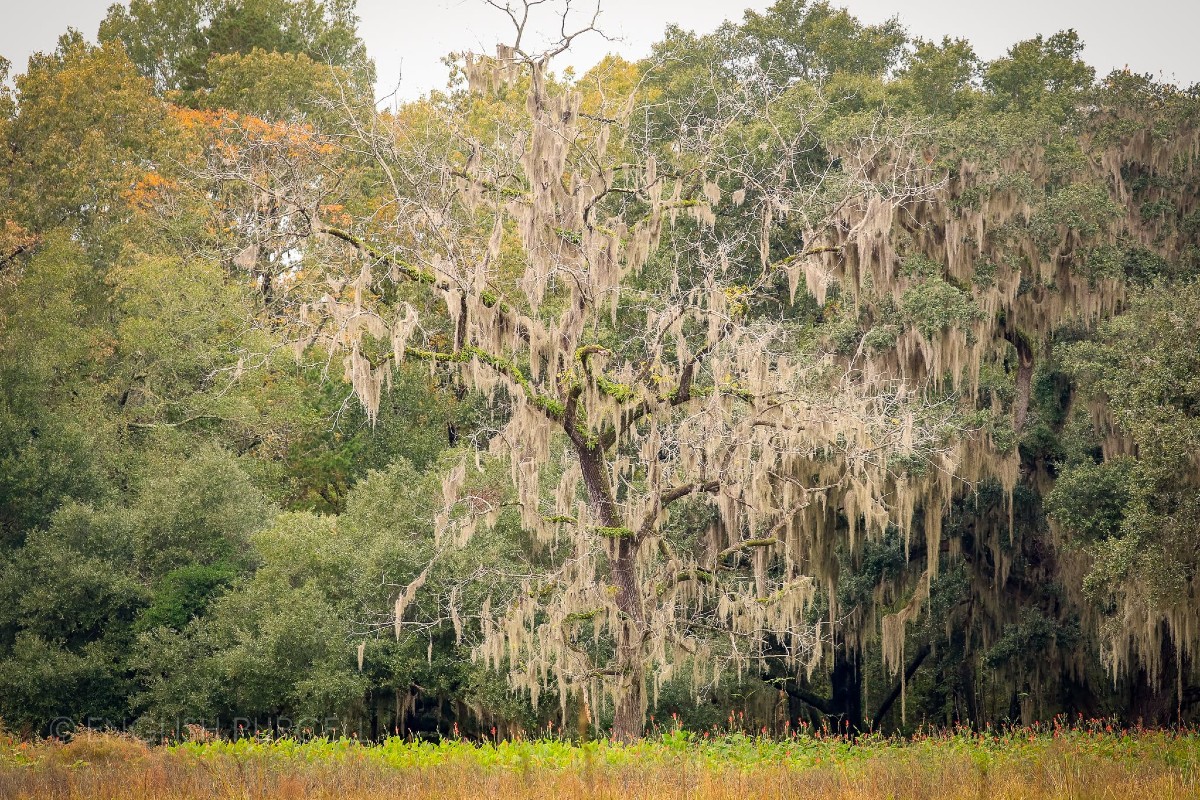
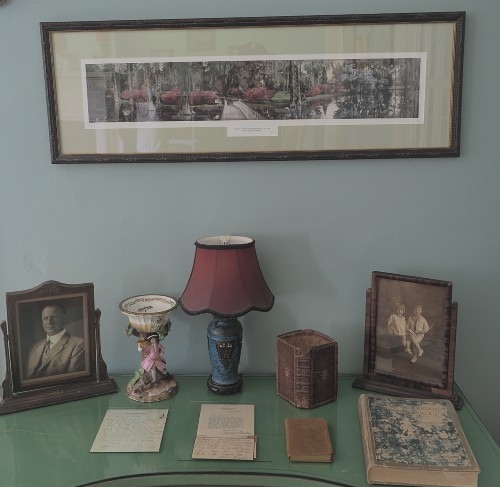
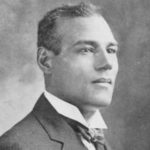
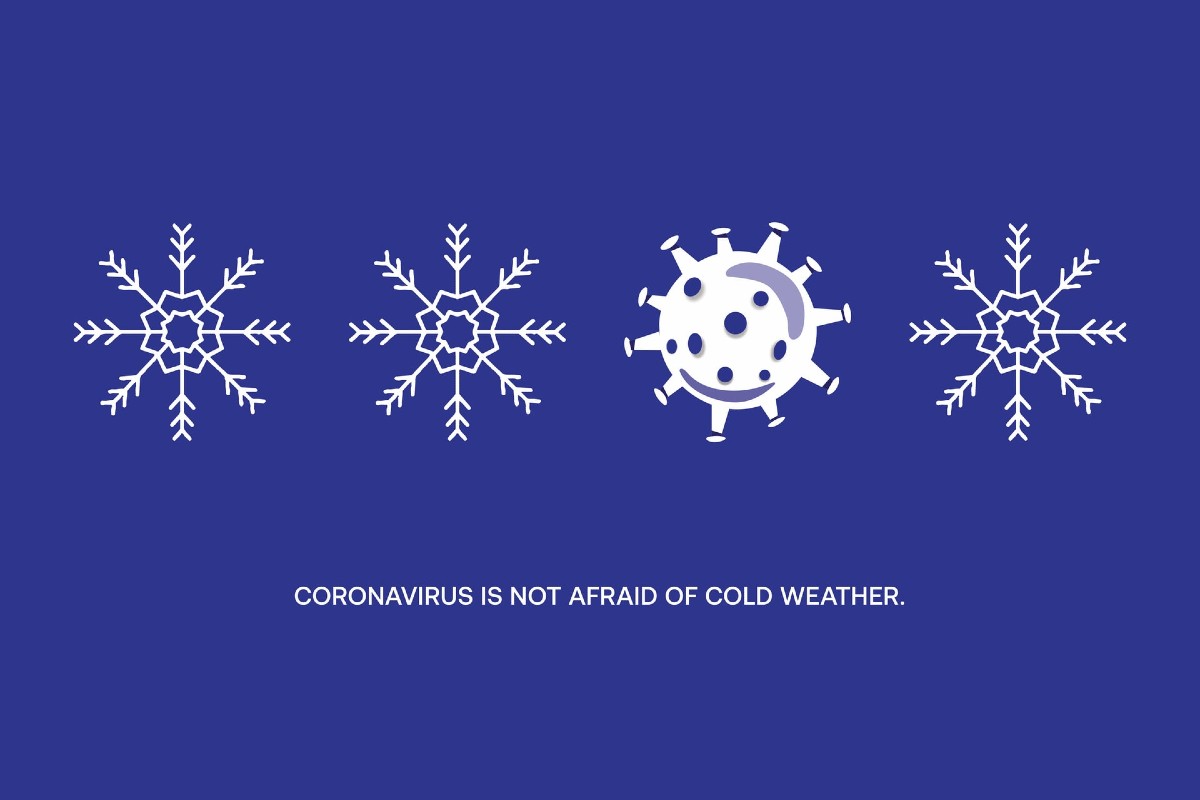
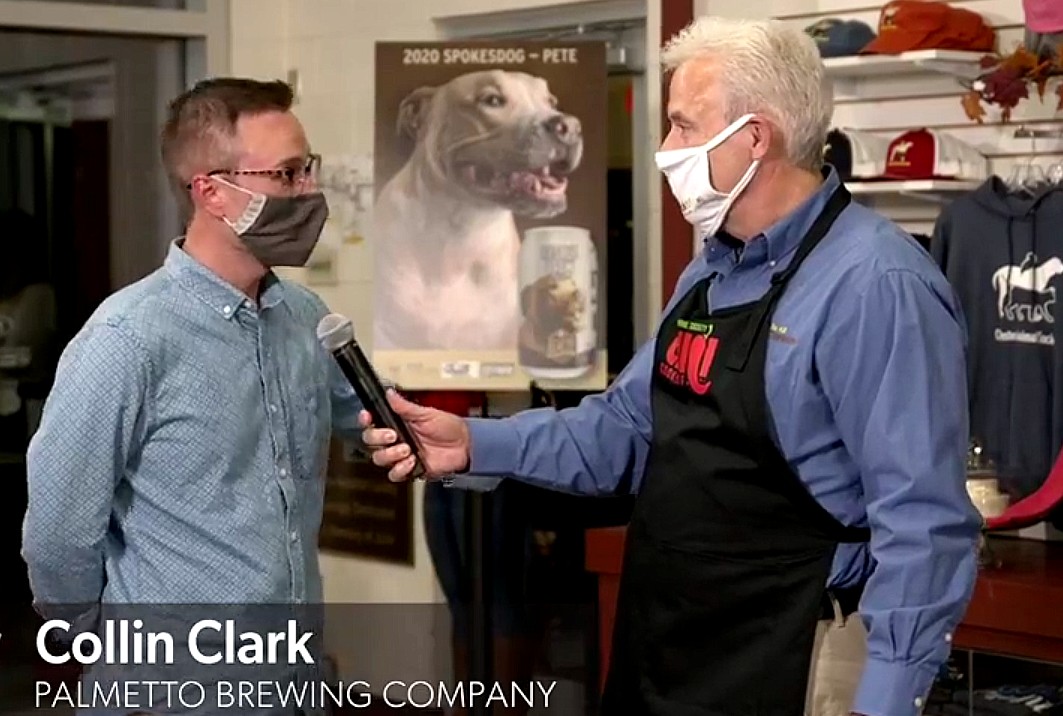
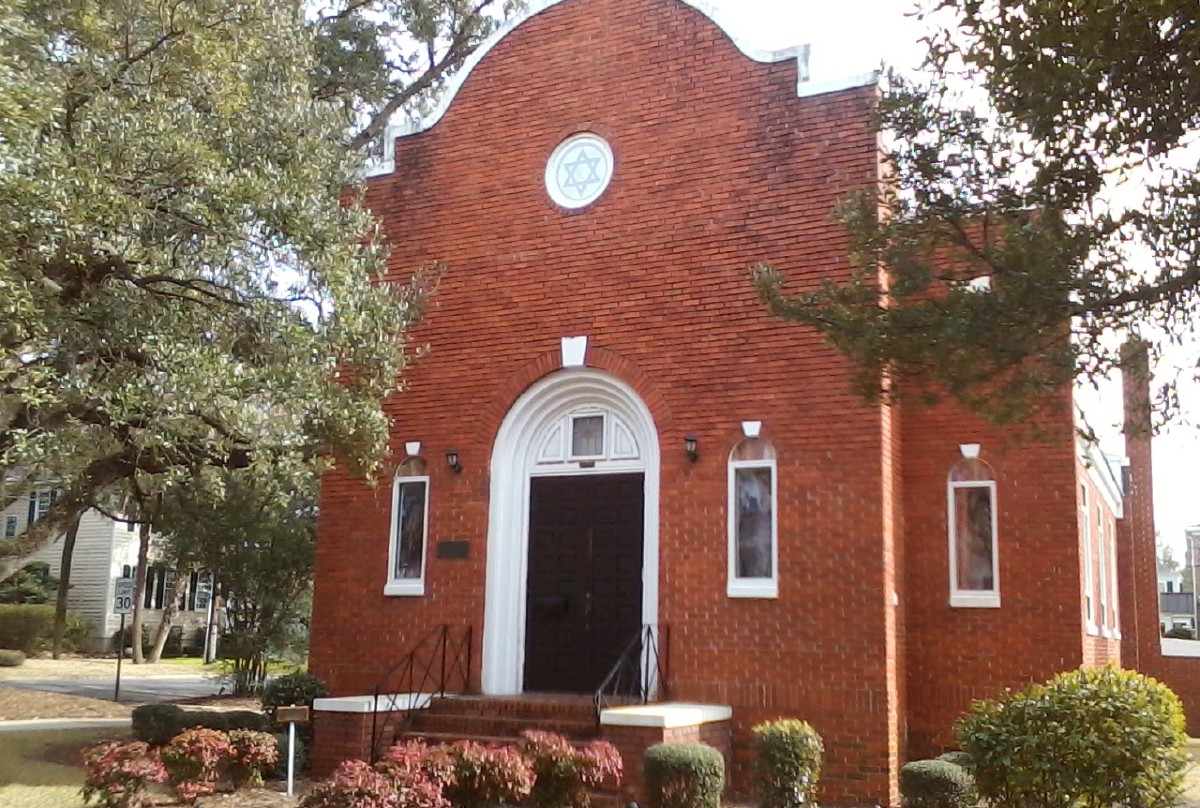
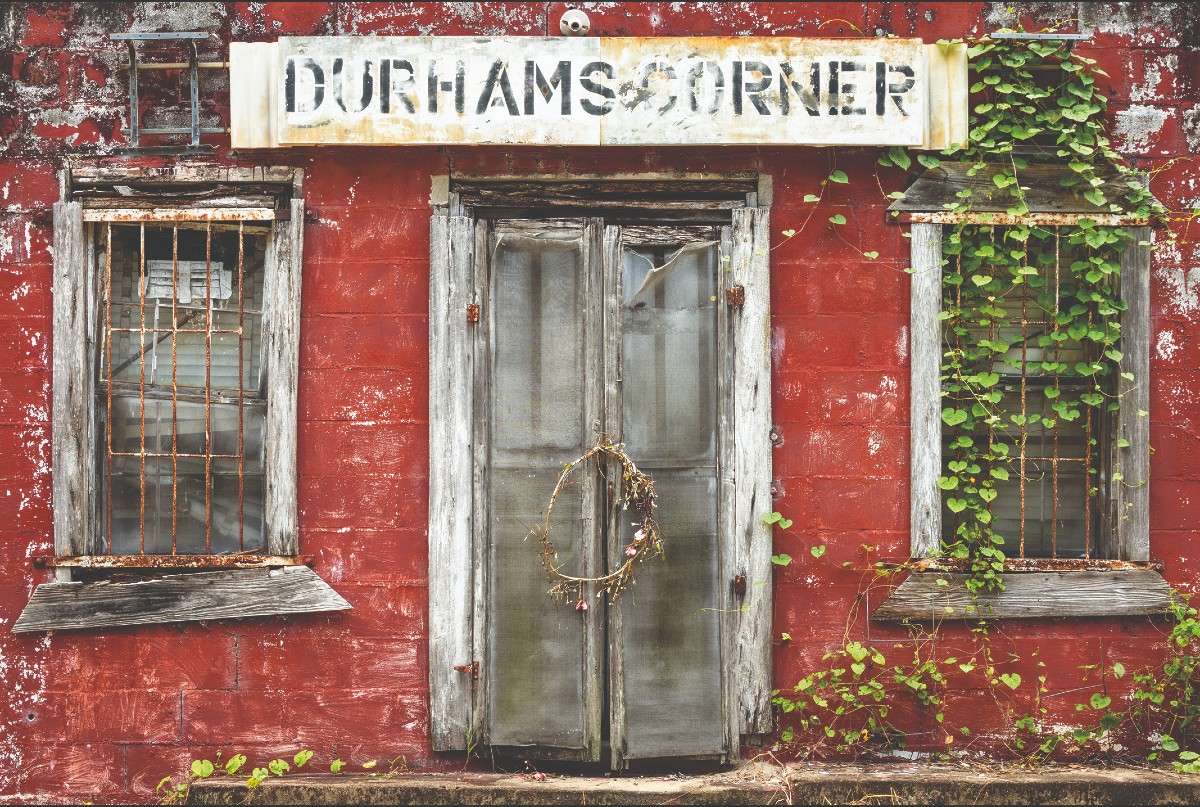

 We Can Do Better, South Carolina!
We Can Do Better, South Carolina!
























